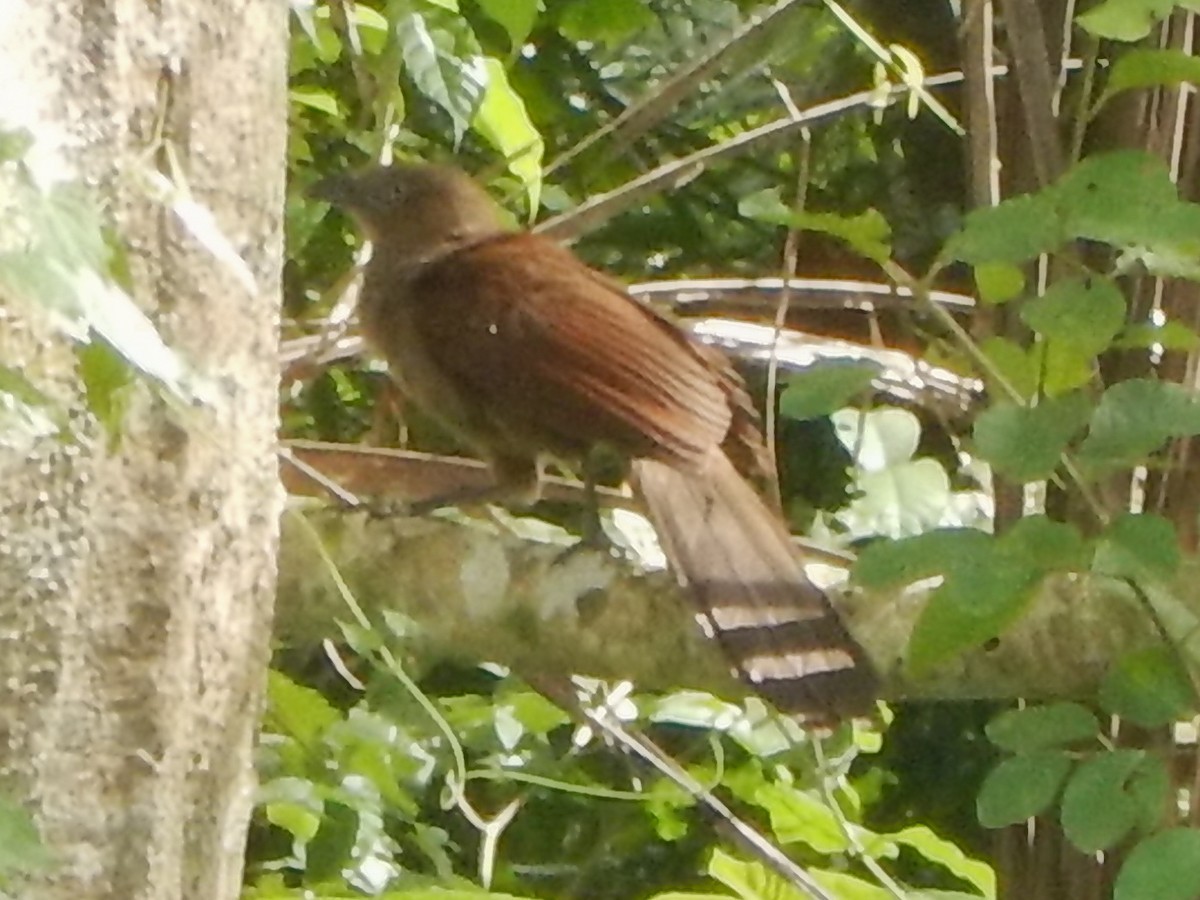Andaman Coucal
A species of Coucals Scientific name : Centropus andamanensis Genus : Coucals
Andaman Coucal, A species of Coucals
Botanical name: Centropus andamanensis
Genus: Coucals
Content
Description General Info
 Photo By Nikolaj Mølgaard Thomsen
Photo By Nikolaj Mølgaard Thomsen Description
It is a large coucal, with males being around 380–400 mm (12.6-15.7 inches) and females somewhat larger at 400–420 mm (15.7-16.5 inches) in length. Structurally, it closely resembles the greater coucal (Centropus sinensis), except that its plumage is a fawn brown as opposed to the black with bluish-purple sheen seen in C. sinensis. It has a chestnut rear mantle and wings and the head is pale tawny brown. The mantle and breast grade from pale to dark brown on the belly and vent. The iris is pale brown. The tail is a pale brown at the base and dark violet-brown towards the tip. The tail feathers have conspicuous black shafts. The juvenile shows slight barring on the body, especially on the underside. 
Size
48 cm
Nest Placement
Tree
Feeding Habits
Andaman Coucal predominantly consumes grasshoppers, as well as various insects and small arthropods, foraging on the ground and in vegetation with specific hunting techniques adapted for its diverse diet.
Habitat
The andaman Coucal is typically found in a diverse range of tropical environments. These birds thrive in dense forested areas, with a marked preference for regions dominated by agricultural cultivation, such as sugarcane fields and paddyfields. Additionally, they are common inhabitants of mangrove swamps, where their adaptive behaviors and feeding habits are supported by the unique ecosystem.
Dite type
Omnivorous
General Info
Feeding Habits
Bird food type
Behavior
It breeds during the monsoon (May through July). The nest is made of twigs, grass and leaves and is placed well above the ground in a tree. The usual clutch is two or three. The song is much like that of the greater coucal, consisting of a long series of very deep and resonant hoop notes. The notes however rise abruptly in pitch. It is also known to produce chuckling and grating calls. Feeds on all kinds of insects, small frogs, crabs and lizards. 
Distribution Area
It is mainly found in the Andamans (at least South, North and associated islets) as well as on the nearby Coco Islands and Table Island, which belong to Myanmar. It is common in forests and in disturbed areas including gardens, forest and edge, mangroves, edges of paddy fields. 

 Photo By Nikolaj Mølgaard Thomsen
Photo By Nikolaj Mølgaard Thomsen Scientific Classification
Phylum
Chordates Class
Birds Order
Cuckoos and Relatives Family
Cuckoos Genus
Coucals Species
Andaman Coucal